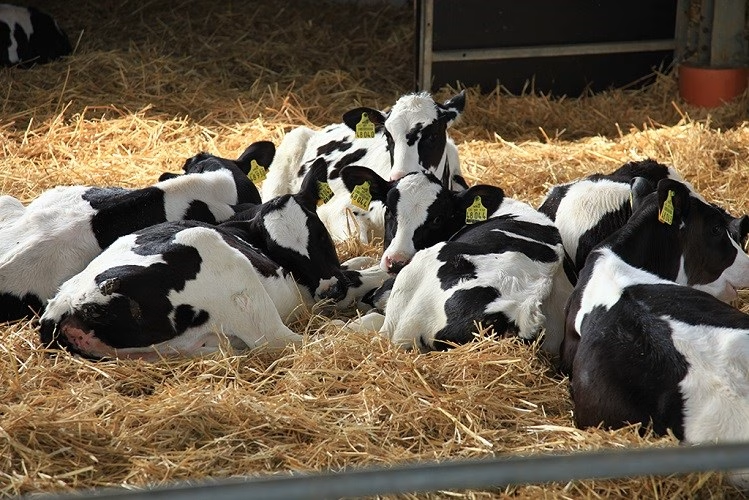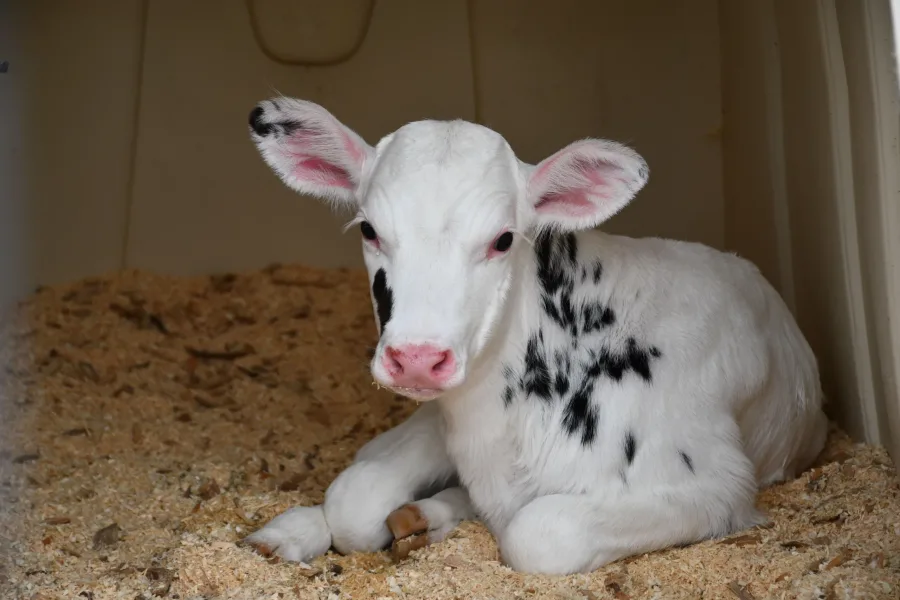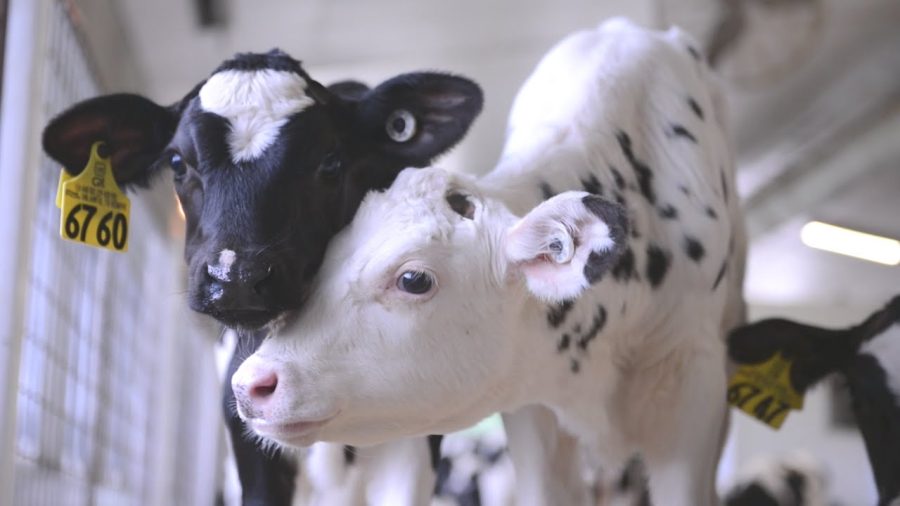Learn how dairy supports brain health and growth in early life. Are you providing the right nutrition for a strong start for future generations?
Is the key to boosting a child’s brain power hiding in your fridge? Dairy plays a vital role in brain health and learning, especially during pregnancy and early childhood. With the dairy industry facing talks on sustainability and nutrition, understanding its effect on early brain development is more critical than ever. Join us as we examine how dairy helps during the first 1,000 days of a child’s life, a crucial time for brain growth. Could adding more dairy be a simple way to support young minds?
Nutritional Powerhouses in Dairy: Building Blocks of Brain Health
Dairy foods are packed with essential nutrients that keep our brains healthy. Let’s look at these nutrients, which help during pregnancy, early life, and beyond.
- Vitamin B12 (Cobalamin): This vitamin is necessary for the brain. It helps form myelin, which protects nerve signals and helps them travel. Without enough, there can be brain issues.
- Iodine: Iodine makes thyroid hormones crucial for brain growth and function.
- Choline: Choline helps make a neurotransmitter essential for memory. It also keeps cell membranes in good shape, allowing brain signals to work well.
- Zinc: Zinc helps the brain make new cells and connections essential for learning and memory. It also helps repair brain tissue.
- Protein: Protein provides amino acids, the building blocks for neurotransmitters and essential brain proteins, supporting brain growth and repair.
- Vitamin A: Known for vision and immune health, vitamin A helps with brain cell growth and function.
- Omega-3 Fatty Acids: Though not as common in dairy as in fish, they help brain structure and reduce inflammation.
- Calcium: Besides bones, calcium is vital for brain communication and muscle work. It indirectly supports brain health by ensuring good blood flow.
- Glutathione (GSH): This antioxidant protects the brain from damage. Dairy might help boost brain levels of this protective substance.
These nutrients highlight the value of dairy products in supporting brain health and development. Including dairy in your diet can help maintain a healthy brain.
Nurturing Minds: Maternal Nutrition’s Impact on Fetal Brain Development
What a mom eats plays a big part in how her baby’s brain develops during pregnancy. Dairy foods are super important because they give key nutrients needed for this process.
- Iodine and Choline: Super Nutrients: Iodine helps make thyroid hormones crucial for brain growth. Without enough iodine, there can be significant brain problems. Choline helps build the brain and is essential for memory and learning (source).
- What Studies Show: Research shows that pregnant women who eat plenty of dairy have kids with better thinking skills. These kids do well in language and memory tests (source).
This proves why having enough dairy in a mom’s diet is essential. Dairy is easy to find and inexpensive, making it a great source of nutrients that help make smarter, healthier kids.
The Power of Dairy in the Critical First 1,000 Days
The first 1,000 days of life, from conception to a child’s second birthday, are key to brain growth. Children’s brains grow fast during this time and set the stage for lifelong learning. What helps this growth? Dairy does! Dairy is packed with nutrients that are essential for cognitive development.
The brain needs a steady supply of essential nutrients during the first 1,000 days. Dairy products provide a mix of proteins, vitamins, and minerals. They offer high-quality protein and healthy fats that help build and repair brain tissues. Vitamins like B12 and iodine in dairy are crucial for thinking and learning. Research supports the role of these nutrients in cognitive development.
Studies show that dairy consumption boosts brainpower. Kids who eat dairy regularly often have better problem-solving skills and memory. Dairy helps with things like analyzing, remembering, and learning. This supports academic success later on. For example, a recent study highlights the correlation between regular dairy consumption and enhanced cognitive abilities in children. [link].
Besides physical growth, dairy supports mental and neurological health too. By including dairy in the diets of young kids and pregnant women, we can ensure they get the nutrients they need for their brains to develop well. This gives kids a head start in life.
Essential Dairy Guidelines for Cognitive Excellence in Pregnancy and Early Childhood
Dairy is vital for brain growth and cognitive health, especially for pregnant women and young kids. Here are some simple guidelines to follow:
For Pregnant Women:
- How Much: Pregnant women should eat at least three servings of dairy daily, which helps them meet their extra nutritional needs.
- Types of Dairy: Choices include milk, yogurt, and cheese. Each nutrient is essential for the mom’s health and the baby’s development.
- Why It Matters: Dairy offers calcium for strong bones, iodine for brain growth, and choline for building the brain’s cerebral cortex. It also provides Vitamin B12 and protein, both key for making DNA and brain cells.
For Young Children:
- How Much: Kids aged 1 to 3 should drink 2 to 2½ cups of dairy daily. For kids aged 4 to 8, aim for 2½ cups each day.
- Types of Dairy: Use milk, yogurt, and cheese in meals and snacks to meet these needs and introduce different tastes.
- Why It Matters: Early years are crucial for brain growth. Dairy supplies essential nutrients like zinc and Vitamin A, which boost memory and learning. Zinc is vital for forming brain connections and improving thinking skills.
Following these guidelines ensures that dairy supports brain development and boosts cognitive abilities from an early age.
Exploring Dairy Alternatives: Nourishing the Non-Dairy Way
If you can’t have dairy, there are good alternatives that try to match the nutrients found in dairy. Plant-based milk, non-dairy yogurt, and cheese are the main options for various dietary needs.
Plant-based milks, such as soy, almond, rice, oats, and coconut, are popular replacements. Soy milk is known for its high protein content, similar to cow’s milk, and is excellent for keeping muscles strong. These milks are often fortified with calcium and vitamins like B12, essential for bones and nerves. However, not all plant-based milk contains the same nutrients as dairy, primarily amino acids crucial for growth, especially in young children. (Learn more about the nutritional content of plant-based milk in this scientific study on plant-based milk alternatives).
Non-dairy yogurts and cheeses made from soy, almond, or coconut aim to replicate the texture and taste of dairy. These alternatives are often fortified with calcium and vitamin D to mimic dairy’s bone benefits. However, they might not have as much protein, and a lack of iodine is vital for brain development and thyroid function. (Additionally, explore how these options compare nutritionally with traditional dairy in this comprehensive review on milk alternatives and dairy)
If you don’t consume dairy, eating a variety of foods is crucial to get all the necessary nutrients. Eating fruits, vegetables, nuts, seeds, and legumes can help fill the gaps. You may also need to take supplements like vitamin B12 and iodine, especially if you’re on an entirely plant-based diet. Consult a nutritionist to ensure your diet covers all the essential nutrients usually found in dairy.
Navigating the Dairy Debate: Discovering Nutritional Equivalence in Alternatives
People often talk about which is better, dairy or non-dairy options, when it comes to nutrition. Dairy is known for having essential nutrients like calcium, vitamin D, iodine, and protein. However, non-dairy options are starting to catch up with similar nutritional benefits.
- Calcium and Vitamin D: Dairy is an excellent source of calcium, but plant-based milks like soy, almond, and oat are often fortified with the same amount as cow’s milk. For example, calcium-fortified soy milk can contain as much calcium as dairy milk.
- Protein Content: Dairy contains high-quality protein essential for growth. Soy milk has about 7 grams of protein per cup, similar to cow’s milk. Some plant milks have less protein, so eating beans, nuts, and grains is essential.
- Iodine and Choline: Getting iodine from non-dairy foods is challenging unless they’re fortified. Seaweed and iodized salt are other sources. Choline, which is essential during pregnancy, can be eaten in combination with eggs and certain vegetables.
Getting the proper nutrients without dairy requires careful preparation. Fortified non-dairy products and foods like beans, seeds, nuts, and vegetables can help fill the gaps. Both dairy and non-dairy options have benefits, so a balanced diet supports brain health and cognitive development.
Unraveling the Complex Web of Cognitive Development
Dairy is good for brain health, but other things are crucial for brain development. The brain grows through the interaction of many influences.
- Genetic Influences: Our genes play a significant role in developing our brains. What we inherit can affect how we learn and solve problems. Some genes can change how we remember, talk, and focus. Even with a good diet, genetics remain essential.
- Overall Diet Quality: Besides dairy, eating a balanced diet is also key. Eating fruits, vegetables, and whole grains helps dairy work better. Nutrients like folic acid, iron, and omega-3s support brain health. Eating a variety of foods can boost the benefits of dairy.
- Environmental Factors: Our surroundings also shape brain development. Family income, education, and home life make a difference. Places rich in learning opportunities can improve cognitive skills.
These elements often influence cognitive growth, so it’s essential to consider all these factors when considering brain development.
Beyond Brain Health: Dairy’s Role in Holistic Development
Dairy helps with more than just brain health; it also aids overall body development. The calcium and vitamin D in dairy is essential for bone health, helping to build strong bones and teeth, which are necessary as kids grow. The high-quality proteins in dairy support muscle development, giving children the strength to be active and enjoy learning through play.
Zinc and vitamin A in dairy are crucial for a healthy immune system. A strong immune system helps kids fight off infections, so they miss less school and have more chances to learn. All these benefits work together to support the physical and mental growth needed for children to succeed in their learning environment.
The Bottom Line
Dairy is key for brain health and cognitive growth, especially in the first 1,000 days of life. Dairy products contain essential nutrients like protein, iodine, and choline that help the brain grow and work well. These nutrients boost cognitive skills and overall child development.
Adding dairy to pregnant women’s and young children’s diets has clear benefits. It helps improve memory, learning, language, and focus. Following dairy intake recommendations can fill nutritional gaps and lay the groundwork for cognitive health.
As more research comes out, it’s clear that dairy supports brain health. Are you ready to make dairy a core part of your nutrition plan to help future generations reach their full potential?
Key Takeaways:
- Dairy products offer essential nutrients like vitamin B12, iodine, choline, zinc, and protein, which are crucial for brain development.
- Regular dairy consumption during pregnancy can positively impact children’s fetal brain development and cognitive outcomes.
- The first 1,000 days, from conception to age two, are critical for brain growth, and dairy nutrients like choline and iodine play significant roles.
- Experts recommend specific dairy intake guidelines for pregnant women and young children to ensure optimal brain development.
- Non-dairy alternatives such as soy or almond milk can supply similar nutrients, though they may require careful nutritional balancing.
- Dairy products support holistic development, including bone health and immune function beyond cognitive growth.
- Understanding and including dairy nutrients in the diet is pivotal for supporting the cognitive potential of future generations.
Summary:
Dairy products are vital for brain health and development, especially during pregnancy and the first 1,000 days of life, when a baby’s brain grows the most. They are packed with nutrients like iodine, choline, and B12, which support brain function. Studies show that pregnant women who eat dairy have children with better thinking and language skills. While some people choose plant-based alternatives like nut milk or non-dairy yogurt, these might not have as much protein or iodine, which is essential for brain growth. It’s critical to include at least three servings of dairy daily or find other ways to get these nutrients. Eating a balanced diet with fruits, vegetables, and nuts can help fill gaps. Dairy is affordable and easy to find, making it an excellent choice for building innovative, healthy kids.
Learn more:
- Harnessing AI: How Dairy Farmers Are Tapping Into the $200 Billion Health and Wellness Market
- How the Olympics’ Most Powerful Athletes Fuel Up with Dairy: Secrets Revealed!
- Alarming Link Between Low Dairy Consumption and Child Stunting: Global Data Insights
 Join the Revolution!
Join the Revolution!
Bullvine Daily is your essential e-zine for staying ahead in the dairy industry. With over 30,000 subscribers, we bring you the week’s top news, helping you manage tasks efficiently. Stay informed about milk production, tech adoption, and more, so you can concentrate on your dairy operations.







 Join the Revolution!
Join the Revolution!







